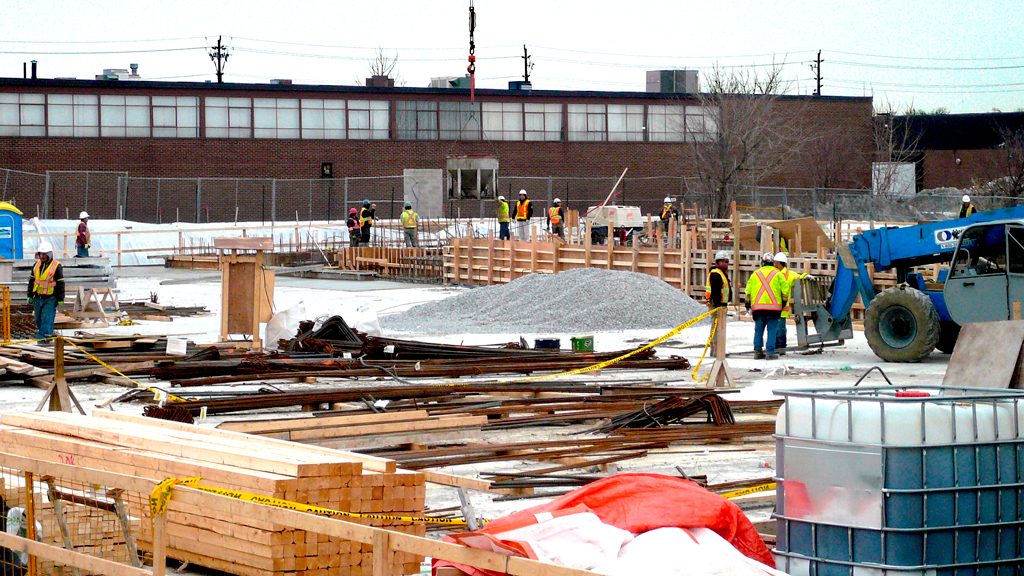With 21 per cent of ∫⁄¡œ≥‘πœÕ¯‚Äôs current construction workforce anticipated to retire this decade, the industry needs to focus on recruitment and retention to prevent a skills and capacity gap, the findings of the latest BuildForce ∫⁄¡œ≥‘πœÕ¯ labour market forecast indicate.
According to the 2018–2027 Construction and Maintenance Looking Forward forecast, more than a quarter of a million construction workers are expected to retire this decade and construction activity could “soften” in most provincial markets due to the aging population and weaker demand for natural resources. The forecast also indicates slow and uneven construction job growth is anticipated as construction activity levels off.
Bill Ferreira, executive director of BuildForce ∫⁄¡œ≥‘πœÕ¯, said the demographic shift that has been anticipated in the construction industry for years is now here.
“The retirement bubble that we’ve been expecting seems to be finally hitting us and it’s all related to the aging demographics of the country,” he said. “We are looking at a significant number of existing workers entering into retirement over the next 10 years. The available pool of new entrants coming into the industry is smaller. That will create some real challenges for the industry.”
The sector will need to increase recruitment efforts in order to avoid a potential skills gap, he added.
Toronto and Vancouver continue to experience tight labour markets and we anticipate they will probably continue
— Bill Ferreira
BuildForce ∫⁄¡œ≥‘πœÕ¯
“The industry will have to continue to work very closely with getting into high schools, community colleges to continue to promote a career in construction to ensure we can continue to access the labour we need,” Ferreira said.
While slow and uneven job growth is anticipated this decade, the report notes there are some positive outcomes, with the workforce estimated to rise by approximately 22,000 workers over the next 10 years.
There are also notable provincial exceptions when it comes to job growth.
B.C.’s Lower Mainland and Ontario’s central and eastern regions were highlighted as rising project demands have outpaced the available local workforce.
“Toronto and Vancouver continue to experience tight labour markets and we anticipate they will probably continue for at least the next five years,” Ferreira reported.
“Over the next decade, apart from British Columbia and Ontario, employment growth should be weaker compared to the previous decade. By the end of our forecast period, national employment demands are only expected to increase slightly.”
In the Lower Mainland, he explained, it will be the stacking of nonresidential construction projects related to infrastructure or transportation as well as the Trans Mountain pipeline expansion project that will keep the industry busy from 2019 to 2023.
“In Toronto and Vancouver we continue to see demand for multi-storey condominium development and we don’t anticipate that’s going to slow down significantly in the foreseeable future,” said Ferreira. “On the nonresidential side, in the Toronto market in particular, it’s a lot of public transit but also there is a lot of sewer and water that is also going on to support that additional density or intensification that is occurring. We’re also looking at a couple of nuclear refurbishments.”
According to the forecast, industrial maintenance work (heavy industrial and nonresidential buildings) will rise steadily across the decade, with larger than normal demands expected in 2018 in Alberta and New Brunswick.
“New investment in oil and gas is down due to global factors and the demand isn’t as high as it was during peak periods,” explained Ferreira. “As a result, what we’re starting to see there is a shift away from new construction into maintenance and renovation. In fact, we’re looking at probably one of the busiest maintenance seasons in recent memory in Alberta and New Brunswick. This spring is going to be a very intense period. There’s going to be a lot of demand on those types of workers.”
The trend across the country in the coming decade, Ferreira said, is for traditional construction growth, more in line with historical norms. He pointed out the construction industry has been experiencing dramatic growth in the industry for almost two decades and will return to more normal levels of construction demand over the next 10 years, particularly when it comes to housing but also nonresidential construction.
“The industry over the past 20 years has doubled in size, in part due to near historical levels of investment in housing, core public infrastructure, the energy sector as well as in metals and mining,” explained Ferreira.
“While future growth drivers vary across the country, slightly lower demand for new construction will mean more of the industry’s workforce will be employed in sustaining capital renovation and maintenance. In terms of overall employment, BuildForce expects the industry will by 2027 be only slightly larger than the 1.4 million employed today.”
BuildForce ∫⁄¡œ≥‘πœÕ¯ forecast highlights
OTTAWA ‚Äî BuildForce ∫⁄¡œ≥‘πœÕ¯‚Äôs latest industry forecast shows several common themes across most provinces.
They are as follows:
- As many as 277,000 new construction workers will be needed this decade.
- Engineering construction employment is expected to decline by four per cent this decade, partly offset by planned investments in infrastructure modernization.
- Public transportation and other infrastructure projects add to employment opportunities across most provinces, boosted by federal and provincial infrastructure investments.
- Major transportation, utility and other infrastructure projects are expected to nudge nonresidential employment up a further three per cent, or 18,400 workers to a near-term peak in 2020.
- Maintenance work, such as heavy industrial and non residential buildings, is on a steady, but moderate increase this decade.
- Growth appears to be concentrated in Ontario and British Columbia, driven by major nuclear refurbishment, liquefied natural gas, energy and transportation infrastructure projects.
- Steady job growth related to anticipated increases in demand for commercial and institutional building construction will prevail in most provinces.
- Slower population growth may lead to lower demand for new housing construction, however, any declines should be offset by rising renovation and maintenance activity.











I am a manager of transportation and I am having a hard time finding qualified mechanics so I tell a lot of young people the trades are the way to go for a career.